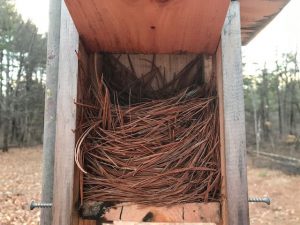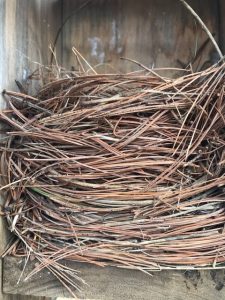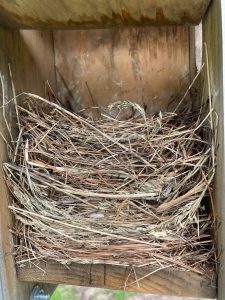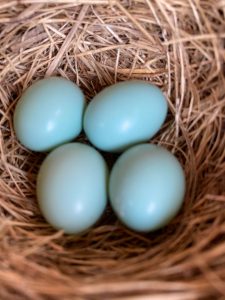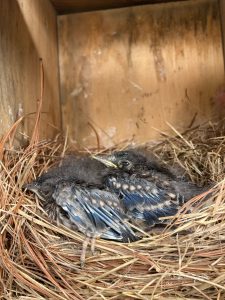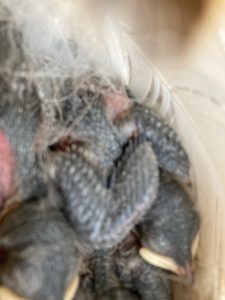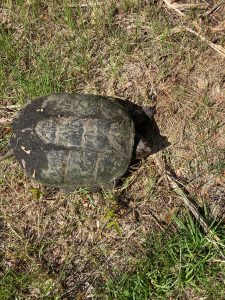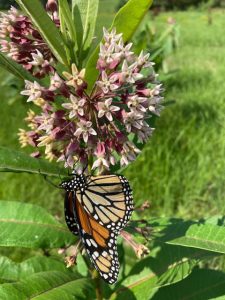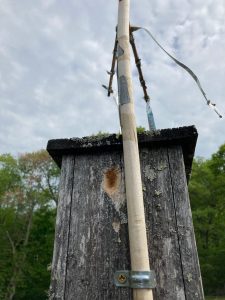The 2021 nesting season is over and the data is out!
Many thanks to LLCT volunteer Patti Cable for monitoring LLCT’s nest boxes around Lincoln. Starting in the early spring, Patti visits each box and opens it for the season. Then she visits 2-3 times per week to monitor nest building activity and make observations about which birds are approaching each box and starting to build nests. Once eggs are laid, Patti makes a note of the date and can estimate when the brood will begin to hatch and eventually fledge. Except for a “do not open period”, Patti continues to monitor the boxes until the chicks fledge.
Patti can usually determine which bird is nesting by the appearance of the nest and by observing which birds are entering the box, perching on the box, or flying near the box. For example, Eastern Bluebird nests tend to be neatly woven pine needles.
In 2021 Patti monitored 10 boxes. 8 boxes were at Chapman Pasture, an LLCT field located between Silver Hill Road and Old Winter Street. There is one box in a small clearing in the Harrington/Twin Pond Conservation Area. The tenth box is in an LLCT field off of Tower Road.
Patti observed 21 nesting attempts. Not all nesting attempts are successful, but once a bird has laid eggs in the nest, it is considered an attempt. From these 21 attempts, Patti documented 34 fledglings. There were 28 Eastern Bluebird and 6 Tree Swallow fledglings.
Of note, several “successful” boxes hosted multiple families throughout the season. These popular boxes might have a location and/or orientation that is favored by the target bird species. The box in the Harrington/Twin Pond clearing housed three separate Eastern Bluebird families, two of which were successful nesting attempts. Similarly, the box in the Tower Road field saw two successful Eastern Bluebird clutches leave the nest.
In Chapman Pasture, the first Eastern Bluebird chick that Patti observed was born on May 13th. This was the day of a prescribed burn in the field. The purpose of the burn was to encourage a greater diversity of native vegetation in the field and therefore increase its value to wildlife, particularly native pollinators. Before the burn, Patti checked all of the boxes. LLCT staff mowed around each box and the prescribed burn crew wet down a perimeter around each box to keep flames and smoke away. After the burn Patti checked each box to ensure that the birds were ok. All four chicks that were hatching that week went on to fledge successfully.
Now in her third year of monitoring for LLCT, the success of the program is clear. Last year Patti recorded 12 Eastern Bluebirds. This year there were 28! Part of this success is likely do to more proactive house sparrow management, conducted by Patti in consultation with Jane Layton. House sparrows are an invasive song bird which compete with Eastern Bluebirds and Tree Swallows for nesting opportunities. By placing “sparrow spookers” outside Bluebird and Tree Swallow nests, the House Sparrows are discouraged from attacking their nests. The spookers are shiny, glittery mylar strands. Additionally, House Sparrow eggs are also prevented from hatching in order to further discourage nesting in these boxes.
Patti also enjoys the other wildlife at these sites, such as other birds, butterflies and bumblebees, and the occasional snapping turtle! All photographs credited to Patti Cable.


